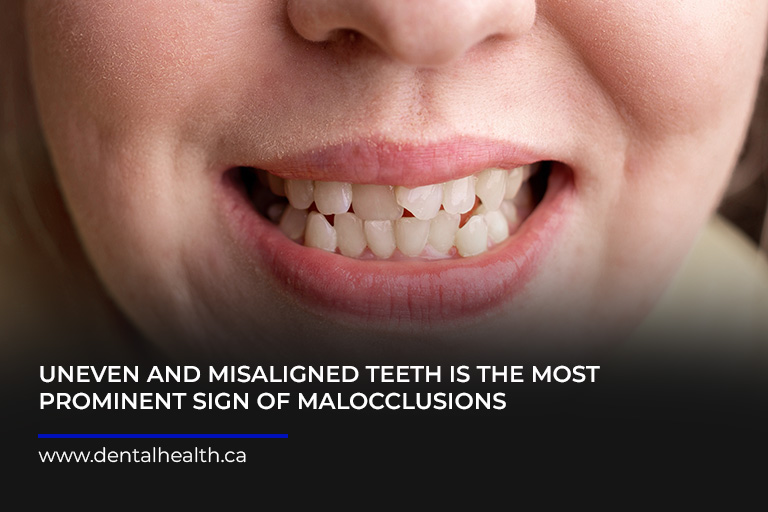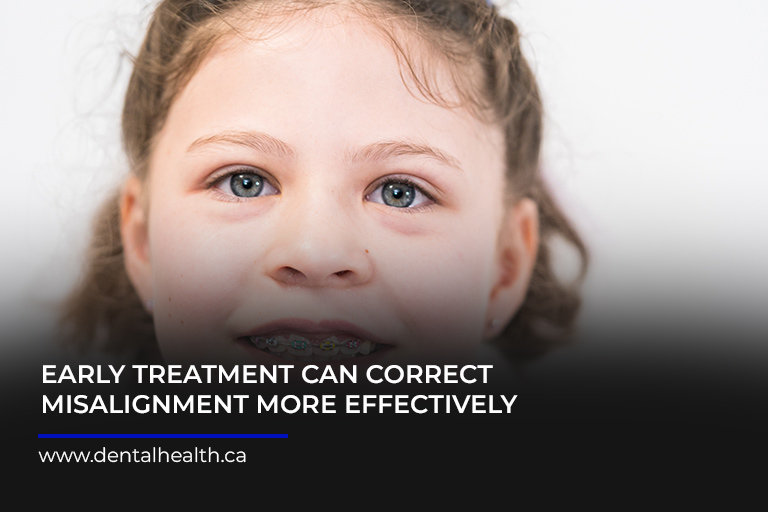Malocclusions, a collective term for dental misalignments such as overbites and underbites, disrupt the delicate balance of the oral cavity, impacting function, comfort, and confidence. These seemingly subtle discrepancies can trigger a domino effect of complications, compromising chewing efficiency, speech clarity, and even jaw health.
Left unaddressed, malocclusions can cast a shadow over quality of life. From chronic jaw pain and headaches to challenges with clear articulation, the consequences can permeate various aspects of daily living. Understanding the nuances of these conditions is crucial for timely intervention and proactive management. This article explores the complexities of malocclusions, shedding light on their causes, symptoms, treatment modalities, and the criticality of early intervention.
What are Malocclusions?
A malocclusion signals a departure from the optimal alignment of teeth and jaws. In an overbite, the upper teeth extend excessively over the lower teeth, while an underbite is characterized by the lower teeth jutting out beyond the upper teeth. These misalignments vary in severity, with some cases necessitating intervention to avert oral health issues and enhance facial aesthetics.
Causes of Overbites and Underbites
The genesis of overbites and underbites is multifactorial, encompassing genetic predisposition, childhood habits, and even underlying medical conditions.
- Genetics: Hereditary factors exert a powerful influence on jaw size and configuration, predisposing individuals to malocclusions. If your parents or close relatives have experienced similar issues, you may be at a higher risk.
- Childhood habits: Thumb-sucking, pacifier use, and tongue thrusting during childhood can exert undue pressure on developing jaws, impeding proper growth and alignment.
- Mouth breathing: Persistent mouth breathing can alter facial structure and compromise jaw development, leading to changes in tooth position.
- Early loss of baby teeth: Premature loss of primary teeth can disrupt the eruption pathway for permanent teeth, causing crowding, spacing irregularities, or even impactions.
- Injury or trauma: Accidents involving the face or jaw can result in fractures or dislocations, leading to misalignment of the teeth and jaws.
- Tumours or cysts: While less frequent, abnormal growths within the jaw can obstruct its normal development and contribute to malocclusions.
- Dental issues: Missing teeth, impacted wisdom teeth, or poorly fitted dental appliances can disrupt the bite and gradually cause malocclusions.
Signs and Symptoms

Early detection of overbites and underbites is pivotal for timely intervention and minimizing long-term complications.
- Visible misalignment: The most conspicuous symptom is the overt discrepancy in the position of the upper and lower teeth. This may manifest as a prominent overjet (horizontal overlap) in an overbite or a noticeable underbite where the lower jaw protrudes.
- Functional challenges: Malocclusions can compromise chewing efficiency, causing difficulty with certain foods or even leading to digestive issues. Additionally, speech clarity may be affected, resulting in lisps or other articulation difficulties.
- Jaw pain and discomfort: The abnormal jaw positioning associated with malocclusions can strain the temporomandibular joint (TMJ), leading to pain, clicking, popping sensations, and even headaches.
- Breathing difficulty: Individuals with malocclusions may experience difficulty breathing through their nose due to constricted airways, resorting to mouth breathing, which can further exacerbate the condition.
- Facial asymmetry: In severe cases, malocclusions can contribute to facial imbalances, impacting aesthetics and self-esteem.
- Dental wear and tear: Misaligned teeth are prone to uneven wear and tear, increasing the risk of chips, cracks, or fractures. This can also impact the longevity of dental restorations.
Treatment Options
The therapeutic approach for overbites and underbites is tailored to the severity of the condition and the individual’s age and developmental stage.
- Orthodontic treatment: Braces and clear aligners remain the cornerstone for correcting mild to moderate malocclusions, gradually repositioning teeth and jaws through gentle, controlled forces.
- Orthognathic surgery: In severe cases where orthodontic treatment alone is insufficient, surgical intervention may be warranted to realign the jaws and achieve optimal facial harmony.
- Early intervention: Addressing malocclusions during childhood, when the jaws are still malleable, can leverage growth potential and often yield superior outcomes compared to treatment in adulthood.
- Restorative dentistry: In conjunction with orthodontic or surgical treatment, restorative procedures like crowns, bridges, or dental implants may be necessary to restore damaged or missing teeth and optimize bite function.
- Myofunctional therapy: This specialized therapy involves exercises and techniques aimed at retraining oral muscles and improving tongue posture, which can complement orthodontic treatment and contribute to improved jaw alignment.
Impact on Oral Health and Appearance
Untreated malocclusions can have a cascading effect on both oral health and overall well-being.
- Periodontal complications: Misaligned teeth can create challenging areas to clean, promoting plaque accumulation and increasing the risk of gum disease and tooth decay.
- Impaired oral hygiene: The difficulty of cleaning crowded or crooked teeth can perpetuate a cycle of poor oral hygiene, further exacerbating dental issues.
- TMJ disorders: Chronic jaw misalignment can place undue stress on the TMJ, leading to persistent pain, headaches, and limited jaw movement.
- Sleep apnea: Obstructed airways associated with certain malocclusions can contribute to sleep-disordered breathing, impacting sleep quality and overall health.
- Psychosocial impact: The aesthetic implications of misaligned teeth can negatively impact self-esteem, confidence, and social interactions.
Importance of Early Intervention

Early diagnosis and treatment of malocclusions offer a multitude of benefits, both immediate and long-term.
- Optimized treatment outcomes: Addressing malocclusions during childhood, when the jaws are still growing and adaptable, often results in more successful and efficient treatment.
- Prevention of secondary issues: Early intervention can mitigate the risk of developing secondary oral health problems, including TMJ disorders, periodontal disease, and uneven tooth wear.
- Harmonious facial development: Correcting malocclusions can contribute to a balanced and aesthetically pleasing facial profile, boosting self-confidence.
- Enhanced self-esteem: A confident smile can empower children and adolescents, fostering positive social interactions and improved mental well-being.
- Reduced treatment complexity and cost: Early treatment may circumvent the need for more invasive procedures like orthognathic surgery, potentially reducing treatment duration and associated costs.
Overbites and underbites are prevalent dental conditions that extend beyond aesthetics, impacting oral health and overall quality of life. Recognizing the signs and symptoms and seeking timely treatment is crucial for preventing complications and achieving a healthy, radiant smile. If you harbour concerns about malocclusions, don’t hesitate to seek the expertise of a qualified dental professional for a comprehensive evaluation and personalized treatment recommendations.
For further information or to schedule a consultation, please contact Kingsway Family Dentistry at (905) 563-4001. Our team is committed to providing exceptional care and guiding you towards optimal oral health and a confident smile.

